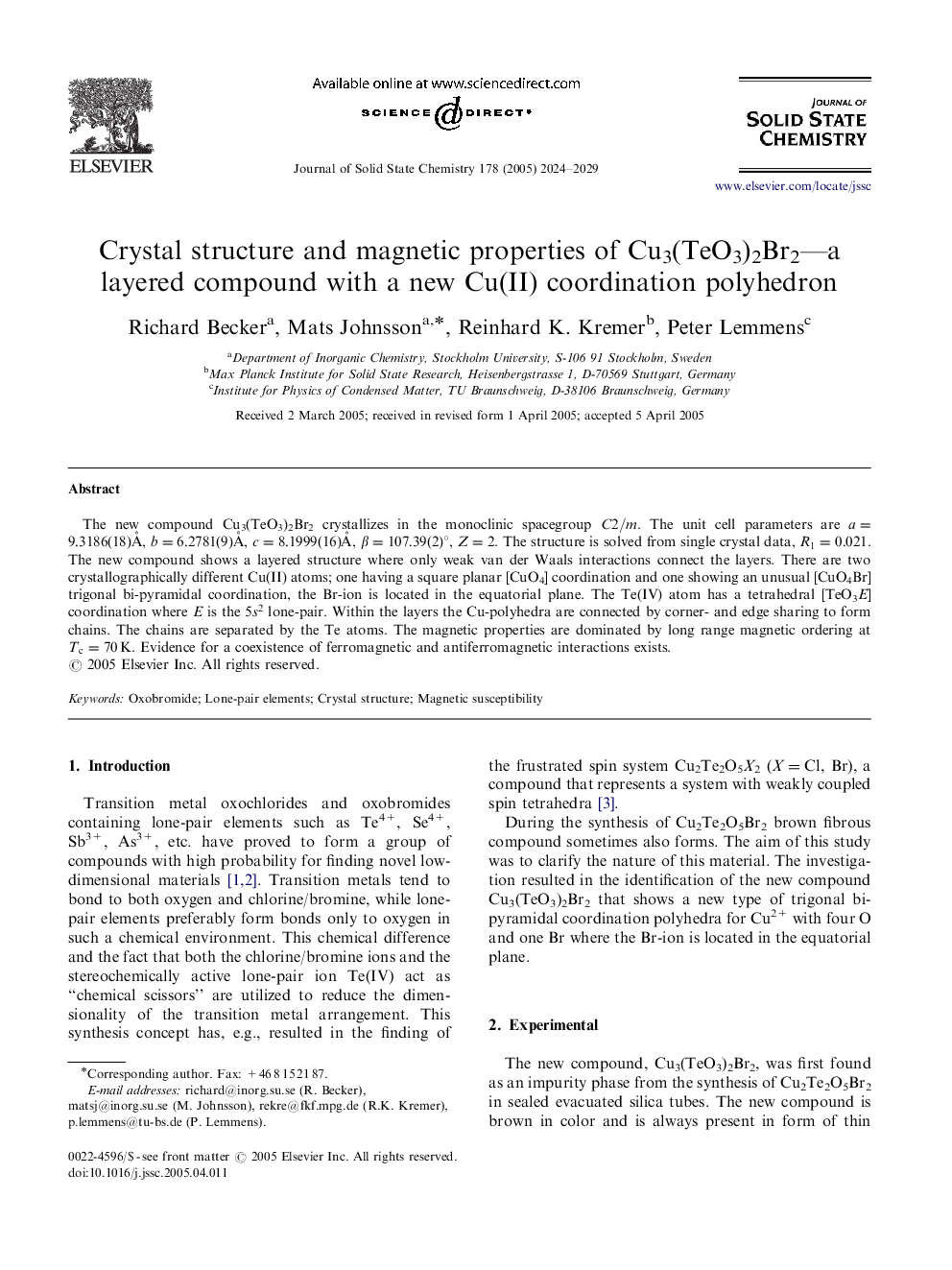| کد مقاله | کد نشریه | سال انتشار | مقاله انگلیسی | نسخه تمام متن |
|---|---|---|---|---|
| 1334174 | 979152 | 2005 | 6 صفحه PDF | دانلود رایگان |

The new compound Cu3(TeO3)2Br2 crystallizes in the monoclinic spacegroup C2/mC2/m. The unit cell parameters are a=9.3186(18)Åa=9.3186(18)Å, b=6.2781(9)Åb=6.2781(9)Å, c=8.1999(16)Åc=8.1999(16)Å, β=107.39(2)°β=107.39(2)°, Z=2Z=2. The structure is solved from single crystal data, R1=0.021R1=0.021. The new compound shows a layered structure where only weak van der Waals interactions connect the layers. There are two crystallographically different Cu(II) atoms; one having a square planar [CuO4] coordination and one showing an unusual [CuO4Br] trigonal bi-pyramidal coordination, the Br-ion is located in the equatorial plane. The Te(IV) atom has a tetrahedral [TeO3E ] coordination where EE is the 5s25s2 lone-pair. Within the layers the Cu-polyhedra are connected by corner- and edge sharing to form chains. The chains are separated by the Te atoms. The magnetic properties are dominated by long range magnetic ordering at Tc=70K. Evidence for a coexistence of ferromagnetic and antiferromagnetic interactions exists.
A new layered compound Cu3(TeO3)2Br2 is presented where the layers have chains of square planar [CuO4] coordination polyhedra and an uncommon [CuO4Br] trigonal bipyramidal coordination polyhedron. Evidence for a coexistence of ferromagnetic and antiferromagnetic interactions exists.Figure optionsDownload as PowerPoint slide
Journal: Journal of Solid State Chemistry - Volume 178, Issue 6, June 2005, Pages 2024–2029